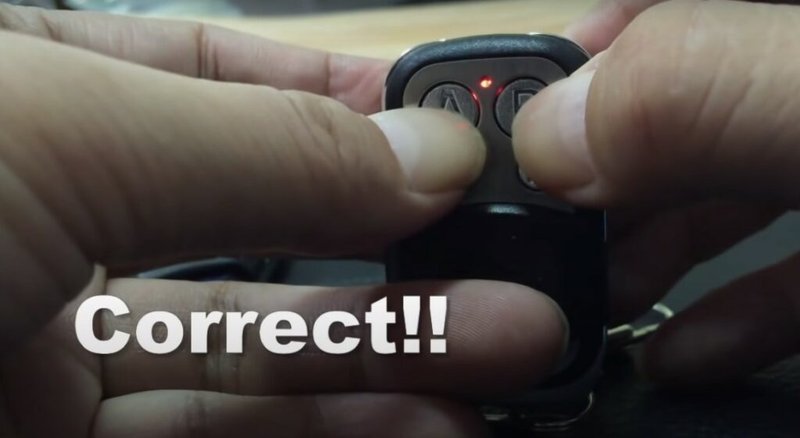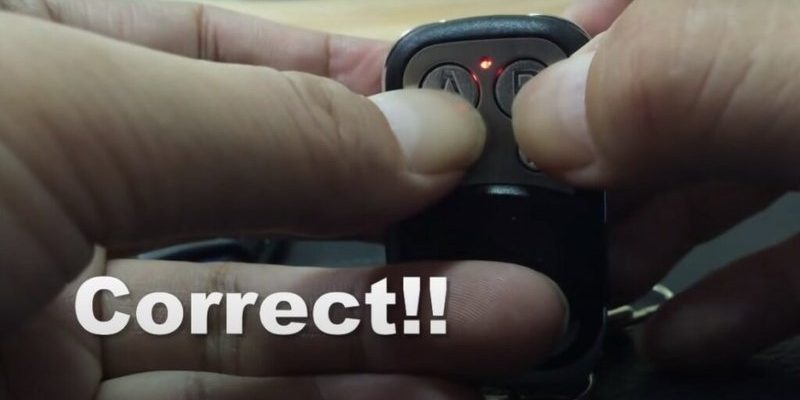
Honestly, cloning a garage remote feels a bit like duplicating a house key, but with a techy twist. Instead of going to the hardware store, you’re working with codes and buttons. The good news is, when it comes to Linear brand remotes, the process is straightforward—but there are a few things you’ll want to know first. Let me walk you through how it works, what you’ll need, and how to troubleshoot if things don’t go as planned.
Understanding Linear Garage Remotes: Types and How They Work
First, let’s get to know these little gadgets. Linear garage remotes come in different models and generations. Some use fixed codes, while others are equipped with rolling code technology for added security. If you’ve seen a row of little switches inside your remote, that’s an older fixed-code model. More modern Linear remotes use rolling codes that change every time you press the button, making it harder for anyone to “listen in” and copy your code.
Here’s the thing: how you clone your Linear garage remote depends a lot on which type you have. With fixed-code remotes, you’re essentially programming a pattern—like an old-school combination lock. Rolling code remotes require syncing with the garage door opener itself, so it’s not just remote-to-remote copying.
A quick peek inside your remote will help. Grab a small screwdriver and pop open the battery cover. Are there little dip switches? That’s fixed code. No switches but a circuit board and battery? Likely rolling code. This distinction matters—so don’t skip this step. It makes all the difference in how successful your cloning attempt will be.
What You Need Before Cloning a Linear Garage Remote
Before you get started, make sure you have the right stuff. Trying to clone a remote without the proper tools is like baking a cake without flour—you’ll only get frustrated. Here’s a realistic checklist:
- Your original Linear remote (the one that works with your garage door opener)
- A compatible blank remote — this could be another Linear remote or a universal remote that supports cloning
- Fresh batteries for both remotes (trust me, a dying battery causes more headaches than you’d think)
- Small screwdriver (for opening up the remotes, if needed)
- Patience — because sometimes these things take a few tries
If you’re working with a universal remote, check the packaging to see if it supports the Linear brand and your specific model. Not every universal remote is compatible, and some only work with certain frequencies or code types. Honestly, that’s one of the most common roadblocks I see: someone grabs a “universal” remote only to find out their garage door opener won’t even recognize it.
Step-by-Step Guide: Cloning a Fixed Code Linear Remote
Let’s tackle the fixed code remotes first. These are the ones with the little switches inside. Here’s what you do:
- Open both remotes. Use your screwdriver to open the original and the blank remote. Find the dip switches on both.
- Match the switch positions. Study the arrangement of switches—up is up, down is down. Set the blank remote’s switches in the exact same positions as your original.
- Check your work. It’s easy to miss a switch. Double-check that every single dip switch matches perfectly.
- Replace batteries and close up the remotes. Snap the covers back on and insert fresh batteries.
- Test the cloned remote. Stand near your garage door opener and press the button. If the door opens, you nailed it!
Here’s a small story: I once spent twenty minutes cloning a remote for my aunt, only to realize I’d mixed up one switch near the end. The door wouldn’t budge. Triple-checking can save a lot of hair-pulling. If it’s not working, sometimes jiggling the battery or re-seating the remote cover helps reset the connection.
How to Clone a Rolling Code Linear Garage Remote
If you peeked inside your remote and didn’t see any switches, you’re dealing with a rolling code system. This type is much more common in newer homes. Cloning here is less about copying and more about teaching the new remote to “pair” with the garage door opener’s memory.
Here’s how to do it:
- Find the Learn button on the garage door opener unit. Usually, this is on the motor unit in your garage—sometimes hidden under a plastic cover.
- Press and release the Learn button. A light will start blinking. You usually have about 30 seconds to finish pairing.
- Press the button on your new remote. Hold it down for a second or two. If the opener light flashes or you hear a click, pairing was successful.
- Test your new remote. Step back and press the button again after the process—if the door opens, you’re done!
With rolling code systems, you might not need the original remote at all, but it helps to have it handy in case you want to double-check which button does what. Some models require you to press a button on both the original and the new remote during pairing—read the specific instructions for your model, just to be safe.
Tip: If you make too many pairing attempts in a row, the opener can temporarily lock out new remotes. If this happens, wait a few minutes and try again. Patience is seriously your best friend here.
Troubleshooting: Why Won’t My Cloned Remote Work?
You might be wondering, “What if my new remote won’t open the garage door?” You’re not alone. Here are common issues and fixes:
- Wrong remote type: Some universal remotes just aren’t compatible with Linear openers—especially if they don’t support the right frequency or code system.
- Dead or weak batteries: This one catches people all the time. Always test with new batteries.
- Misaligned dip switches: If even one switch is off, the signal won’t match.
- Exceeded memory limits: Most garage door openers have a limit to how many remotes they can remember. If you’ve paired a lot, you may need to reset or delete unused remotes.
- Radio interference: Sometimes other wireless devices (even LED lights!) can scramble signals. Try moving to a quieter spot or turning off nearby electronics.
If you’re still hitting a wall, reset the garage opener’s pairing memory and try again from scratch. Each Linear opener model handles a full reset a little differently—but generally, holding the Learn button for several seconds wipes the memory clean, allowing you to start fresh.
Universal Remote vs. Linear Remote: Which Is Better for Cloning?
You might be asking: Should I just get another Linear brand remote, or can I use a universal one? Here’s my take after seeing a few attempts go sideways:
Brand-specific remotes almost always give you the smoothest experience. They’re made to match your door opener’s code and frequency. If you just want a hassle-free clone, this is usually the best way.
Universal remotes are tempting (they’re easy to find and often cheaper). However, not all universal remotes support Linear’s full range of frequencies or rolling code systems. Some only work with fixed-code setups, and others may require extra steps or even special adapters.
If you love DIY puzzles and don’t mind a little trial and error, a universal remote can work—just check compatibility first. Otherwise, play it safe with the same brand.
Keeping Your Linear Garage Door Remote Secure
Here’s something a lot of people forget: a cloned garage remote isn’t just about convenience—it’s about security too. Think of your garage remote like a physical key. If someone copies it without your knowledge, they could access your home.
With fixed-code systems, security risks are higher because copying is as easy as lining up dip switches. Rolling code systems are safer since the code changes every time you press the button, making it almost impossible for someone to clone without access to your garage opener’s Learn button.
If you ever lose a remote (or give one to someone you no longer trust), reset your garage opener’s memory and re-sync only the remotes you want to keep. It’s a small step, but it keeps your home secure.
Resetting and Pairing Multiple Linear Garage Remotes
Let’s say you want to clear out all old remotes after moving into a new house, or you need to start fresh after losing one. The reset process is a bit different from cloning, but it’s worth knowing:
- Hold the Learn button on your garage opener until the light turns off. This erases all paired remotes from the opener’s memory.
- Once cleared, pair each remote you want to use by following the rolling code pairing steps from above.
- Test every remote one at a time. If any don’t work, repeat the pairing process.
If you have both fixed and rolling code remotes mixed in, pay attention to which opener you’re using and follow the process for each type. Trying to pair a fixed-code remote to a rolling-code opener (or vice versa) will just lead to frustration.
Final Thoughts on Cloning Your Linear Garage Remote
So, cloning a Linear garage remote is simple once you know which type you have and what steps to follow. For fixed code remotes, it’s a matter of matching the switches. With rolling code remotes, you’re syncing directly to the garage opener’s memory. Either way, starting with the right equipment and a little patience goes a long way.
If you ever get stuck, check your batteries, slow down, and make sure you’re using a truly compatible remote. Trust me, garage remotes are finicky but not impossible—think of it as a small but satisfying tech project with a big everyday payoff. And if all else fails? Sometimes, asking a neighbor who’s done it before or giving the manufacturer a quick call can save you a world of frustration.
Happy cloning, and here’s to never getting locked out of your own garage again.
